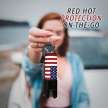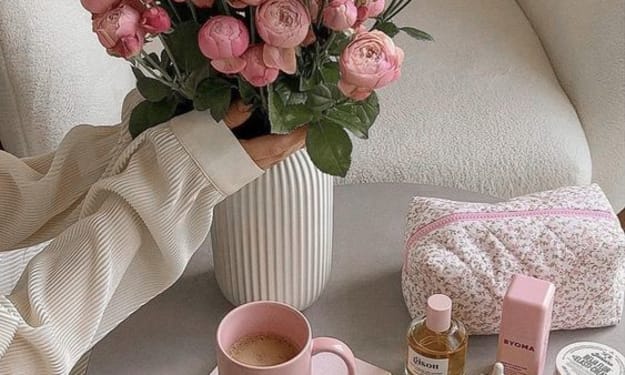Unveiling the Mystique: The Fascinating World of Drinking Horn!
Drinking Horn

Rich in tradition and history, the drinking horn is a timeless representation of culture and good company. These ancient vessels, which originated in various continents and civilizations, were painstakingly and respectfully fashioned from the horns of animals, usually cattle or oxen. These horns were highly symbolic of strength, hospitality, and social ties in Nordic and Celtic societies. A key component was craftsmanship; after the horns were chosen, cleaned, and shaped, artists adorned them with elaborate carvings or designs, each of which served as a testament to the artist's talent and imagination.
These horns have changed over time from ceremonial objects to beloved emblems of joy and friendship, and they are now used in themed parties, cultural events, and contemporary celebrations. Modern materials are combined with traditional techniques to create contemporary interpretations that offer a wide range of designs to accommodate personal preferences and tastes. This horn, whether it be for joyous celebrations or serious rituals, continues to represent the ageless spirit of camaraderie and custom, uniting the past and present in a toast to moments spent together and treasured memories.
Origins and History of Drinking Horn:
The drinking horn has its roots in ancient cultures around the world when it was customary to use animal horns as drinking vessels. The Nordic and Celtic peoples were among the first recorded cultures to use drinking horns. They held great respect for these implements due to their dual symbolic and utilitarian value. This horn was connected to the god Odin in Norse mythology, who was frequently shown holding a horn full of mead, the beverage of the gods.
Similar to this, horns were used in rituals and feasts held by Celtic tribes, who saw them as symbols of kinship and hospitality. These ancient horns were incredibly well-made, with skilled craftsmen painstakingly choosing and shaping horns from cattle or oxen, and then embellishing them with elaborate carvings or decorative elements. They are a symbol of conviviality and cultural heritage that has spread throughout Europe and beyond as societies have changed. The horn is still prized today as a relic that connects us to our distant history and attests to the endurance of celebration and companionship customs.
Crafting and Artistry of Drinking Horn:
Making a drinking horn is a painstaking craft that calls for dexterity, accuracy, and a thorough comprehension of the material and its cultural significance. The first step for artisans is to carefully choose a suitable horn, which is frequently taken from buffalo, cattle, or oxen. After that, the horn is cleaned, polished, and occasionally heated to get rid of any last traces of impurities or smells.
The horn is then carefully heated and shaped to take on the required shape, which is usually a beautiful curve with a tapered tip. During this procedure, craftsmen might use conventional instruments like blades, sandpaper, and heating elements to mold and polish the form of the horn. The real artistry starts when the surface of the horn is embellished after the basic form is completed. This may entail elaborate inlays, etchings, or carvings that are frequently motivated by mythological, natural, or culturally symbolic themes.
To improve the horn's aesthetic appeal, some craftspeople might also add metals, gemstones, or other decorative components. Every design is distinct, showcasing the creativity of the artisan and the drinking horn's cultural history. The horn is then sealed and polished to keep moisture out and maintain its beauty for many years to come.
Applying waxes, varnishes, or natural oils may be necessary to improve the drinking horn's resilience and shine. The end product is a magnificent piece of art that displays the artistry and cultural customs of its creator in addition to being a useful drinking vessel. A beautifully crafted drinking horn is a treasure to behold, embodying centuries of craftsmanship and artistry, whether it is used in ceremonial rituals, joyful celebrations, or just as a decorative piece.
Cultural Significance and Rituals:
Throughout history and across numerous civilizations, these horns have been associated with ritualistic activities, hospitality, and friendship. These horns were common in many ancient cultures, especially Germanic, Celtic, and Norse societies, where they were highly valued both socially and spiritually. For example, the drinking horn was a symbol of honor and feasting among the Norse, frequently employed in rituals to toast to the gods or commemorate military victories.
It also played a significant role in Norse mythology, where stories of gods like Odin sipping mead—the deity's sacred beverage—from enchanted horns were told. Similar to this, these horns were highly valued in Celtic culture as fertility and status symbols. They were frequently employed in holy rites and ceremonies to pay tribute to ancestors and deities. They were also frequently used in feasting rituals, in which the sharing of a horn of ale or mead represented the ties of solidarity and kinship between clan members.
These horns are still significant cultural objects even in more modern settings, though they are usually used more as sentimental or ceremonial objects than as regular drinking glasses. These horns are still utilized in rituals and ceremonies to honor gods, ancestors, and nature spirits in some contemporary neopagan and pagan traditions, keeping a link to antiquated practices and beliefs. Furthermore, a drinking horn is occasionally used in Renaissance fairs, fantasy-themed weddings, and events with a medieval theme.
In these settings, they provide an authentic and charming historical touch to the celebrations. Ultimately, these horns have a rich cultural history that goes beyond their practical use. They represent a multitude of customs, beliefs, and rituals that have persisted through the ages. The drinking horn is a potent symbol of cultural heritage and community bonding that can be used in both modern and ancient ceremonies. It connects people over time and distance by the common experience of raising a horn in celebration, friendship, and reverence.
Read More: Uses, Types, and Benefits of Rubber Balls:
About the Creator
Mai Sophia
A Writer/blogger by day, a knife enthusiast and survivalist by night. I've reviewed a lot of products and have helped people make the right purchase






Comments
There are no comments for this story
Be the first to respond and start the conversation.